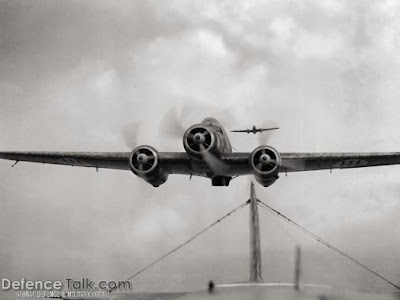Currently I am working on a model that is brand new to me, both in the manufacturer and aircraft represented.
The model is the SM-79-1 tri engined bomber, used by Italy in World War Two. This is the second tri motor aircraft I have built, the first being the Junkers Ju-52.
The kit is made by Italeri, and it is the first kit by this company, that I have ever built.
Why did I not build Italian aircraft before?
I really can't tell you this, I always loved the Italian paint schemes, but I just never got around to building any kits, until now.
The SM 79-1 was a modified version of the SM-79, a plane used by both the Italian Army Air Force and Naval air wings.
When I got the kit, it came with markings for an Italian bomber used in the Spanish Civil war, as well as a pre war version and a version used later when Italy began their campaigns in lands like Ethiopia and North Africa.
Although there were some interesting paint schems, I wanted something a bit more interesting, lucky for me I am a member of a facebook site titled Ships-and-planes-silhouettes, which provides a variety of profiles of aircraft, armor and ships as well as profiles of pilots and crews.
I found a profile for the SM-79 as a night bomber, the plane painted almost entirely in black. This scheme cried out to me, and I quickly began to paint my model for this version.
I have used Google to search for photos of the interior of this plane, so I have the right colors for things such as seats,contold panels and flight decks.
So far it has been a slow build, but for me that is the nature of the game.
Here are some photos of my model as it looks now, and a few of the actual aircraft.
SM 79 having made successful anti shipping attack
SM 79 desert air base, North Africa?
SM 79 with clipped wing tips.
Early war markings and camoflague, based on paint scheme used in Spanish Civil war.
SM 79 Desert camoflague and setting.
Possible photo of SM 79 with 257 Squadrigila 108th Gruppo 36th Stormo
Formation of SM 79's on patrol.
Flight of SM 79's ready to take off on a strike.
SM 79's low level approach.
Model representing SM 79 as it would have appeared in the Spanish Civil War.
Profile from Facebook group Ships and Planes Silhouettes.
Cover of Italeri 1/72nd scale model of the SM 79
Parts being painted Gloss Black.
Parts,instructions and decals.
Landing gear and gear foors installed.



























